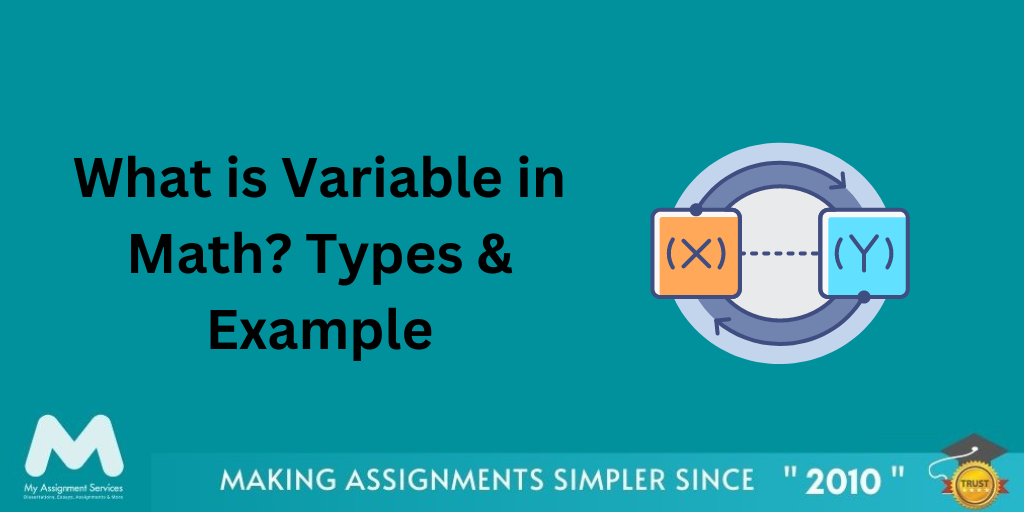
Are you also looking for proper clarification on what is variable in math? If yes! You have landed on the right blog.
Therefore, mathematics, often referred to as the universal language, encompasses many concepts and tools that help us make sense of the world. The variable is a fundamental concept that serves as a building block for various mathematical expressions and equations. Furthermore, it is completely understandable if any student finds it difficult to learn or understand. Math is a subject that is exciting for many scholars.
However, in this write-up, we would like to explain all the essential and precise details of what is a variable in math. Furthermore, variables are used with different contexts and purposes. Instead of introducing a variable as a complicated word with many explanations, students need a simple definition to learn and understand it clearly. Likewise, keep reading till the end to comprehend all valuable types and examples.
Certain aspects, such as your date of birth, stand unwaveringly constant. Contrastingly, temperature, age, and height fluctuate with time and location, earning them the title of variables due to their ever-changing nature.
A variable emerges as a symbol, typically denoted by a letter, representing an elusive numerical value within an equation or expression. A variable embodies a quantity that embraces change, refusing to be confined to a fixed state to provide helpful math assignment help and understanding. These variables hold pivotal roles in the intricate tapestry of algebra, serving as integral components.
While the convention often leans towards using the enigmatic "x" and "y" to symbolise unknown integers, there exists no obligation to conform, as any letter may be enlisted to embark on the journey of mathematical exploration.
In statistics and research, variables are attributes or characteristics that can vary and are studied or measured in research. Therefore, there are two main types of variables: independent variables and dependent variables. Additionally, variables can also be categorised as qualitative (categorical) or quantitative (numerical). Here's a brief explanation of each variable in math.
The independent variable is a crucial component in scientific experiments and mathematical equations. Therefore, it is the factor that researchers or individuals deliberately manipulate or choose. Furthermore, denoted by the symbol 'x,' the independent variable is the input or cause in a mathematical relationship. For instance, in an experiment investigating the effect of different temperatures on plant growth, the independent variable would be the varying temperatures intentionally applied to the plants. Likewise, it is the variable that researchers have control over and seeks to observe its impact on the dependent variable.
In contrast to the independent variable acceleration a level maths, the dependent variable is the outcome or result that relies on changes in the independent variable. Furthermore, often represented by 'y' in equations, the dependent variable reflects the effect or response to alterations in the independent variable. The dependent variable would be the measured height or health of the plants, which is influenced by the different temperatures (the independent variable) they were exposed to. Moreover, the dependent variable is what researchers are trying to understand or predict through their observations and measurements.
Discrete variables are characterised by distinct and separate values typically counted in whole numbers. Furthermore, discrete variables include the number of students in a classroom, the outcome of rolling a die, or the number of cars in a parking lot. Likewise, these variables provide math assignment help, are countable and do not have intermediate values between two consecutive points. Thus, the distinction between values is clear and specific. Also, it makes them suitable for scenarios where counting an exact numerical representation is appropriate.
On the other hand, continuous variables can take any value within a given range. Hence, unlike discrete variables, they have infinite possible values. Examples of continuous variables include height, weight, temperature, and time. Furthermore, these variables are often measured rather than counted and can have values between two points within their specified range. Continuous variables are essential in scenarios where precision and a more detailed data representation are necessary.
A Literal variable in math plays a unique role in equations, representing constants or specific values that remain constant throughout the problem. Therefore, because of the dynamic nature of independent and dependent variables, literal variables are assigned fixed values and do not change during the experiment or mathematical analysis. However, they are often denoted by letters other than 'x' or 'y' and serve as constants to maintain consistency and accuracy in the equation. Likewise, literal variables are useful in expressing mathematical relationships and ensuring that specific values remain unchanged throughout the calculations.
Here are some examples of variable acceleration a level maths that will help you understand more breadth and depth.
A classic example involving two variables is a linear equation, such as 2x + 3y = 10. Here, 'x' and 'y' are the variables, and the equation describes their relationship.
Quadratic equations, such as ax^2 + bx + c = 0, involve variables raised to the second power. Solving for the variable 'x' in these equations often requires the application of the quadratic formula.
Systems of equations involve multiple equations with multiple variables. For instance, consider the system:
2x + 3y = 10
4x - y = 5
Solving for both 'x' and 'y' simultaneously is a common application of variables in mathematics.
Variable in math is crucial in geometry, representing lengths, angles, or other geometric properties. For example, in the formula for the area of a rectangle (A = l * w), 'l' and 'w' are variables representing the length and width.
This article offers a straightforward glimpse into the key role of variables in mathematical variance studies, exploring the diverse array of techniques available and their tailored applications based on variable types. Delving into what is a variable in math, its types and illustrates their practical significance through compelling examples.
If you require further assistance, look no further than My Assignment Services. Our experienced experts, well-versed in every subject, bring extensive experience to the table. They craft your solutions from the ground up, ensuring a comprehensive understanding of every nugget of knowledge imparted. Time is of the essence, so why hesitate? Engage our budget-friendly services today with a simple phone call – we're at your disposal.

Hello! I am Cloe Book, an English literature student and work as a part-time professional writer and a consultant. My skill is to make compelling narrative and critical analysis to help students gain good grades while learning to develop their Essay writing skills.
1,212,718Orders
4.9/5Rating
5,063Experts
Turnitin Report
$10.00Proofreading and Editing
$9.00Per PageConsultation with Expert
$35.00Per HourLive Session 1-on-1
$40.00Per 30 min.Quality Check
$25.00Total
FreeGet
500 Words Free
on your assignment today
Trending now
The Student Corner
Subscribe to get updates, offers and assignment tips right in your inbox.
Popular Posts
Popular Posts
Request Callback
Doing your Assignment with our resources is simple, take Expert assistance to ensure HD Grades. Here you Go....
Lock in your expert now.
Pay the rest only after you're 100% satisfied.
Why this is a no-brainer:
Loved reading this Blog? Share your valuable thoughts in the comment section.
Add comment